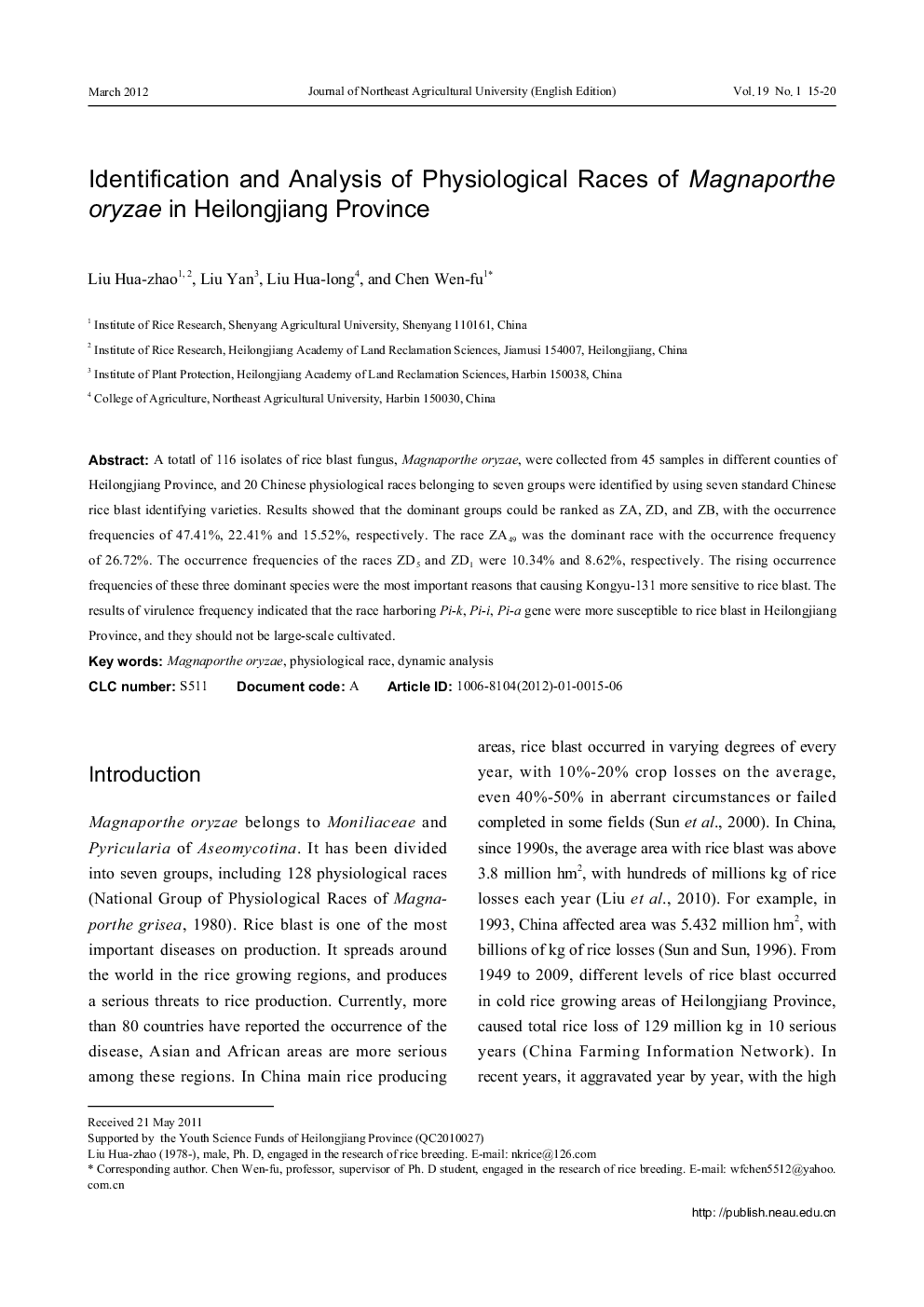| Article ID | Journal | Published Year | Pages | File Type |
|---|---|---|---|---|
| 4495454 | Journal of Northeast Agricultural University (English Edition) | 2012 | 6 Pages |
A totatl of 116 isolates of rice blast fungus, Magnaporthe oryzae, were collected from 45 samples in different counties of Heilongjiang Province, and 20 Chinese physiological races belonging to seven groups were identified by using seven standard Chinese rice blast identifying varieties. Results showed that the dominant groups could be ranked as ZA, ZD, and ZB, with the occurrence frequencies of 47.41%, 22.41% and 15.52%, respectively. The race ZA49 was the dominant race with the occurrence frequency of 26.72%. The occurrence frequencies of the races ZD5 and ZD1 were 10.34% and 8.62%, respectively. The rising occurrence frequencies of these three dominant species were the most important reasons that causing Kongyu-131 more sensitive to rice blast. The results of virulence frequency indicated that the race harboring Pi-k, Pi-i, Pi-a gene were more susceptible to rice blast in Heilongjiang Province, and they should not be large-scale cultivated.
